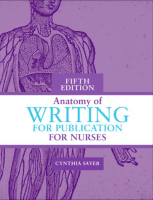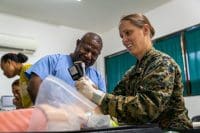No matter where you practice, you’ll frequently find yourself caring for patients receiving antibiotic drugs. Infection is a common problem in all patient populations, and fever or suspected infection is a frequent cause of hospital admissions and emergency department or urgent care visits. Today, many patients have multiple illnesses that make them more likely to get infections.
But even though infections are extremely common, antibiotic therapy is anything but routine—especially given the problem of resistant bacteria. To help reduce the growing danger of bacterial resistance, clinicians must use added caution when prescribing antibiotics, selecting an appropriate agent, administering these drugs, monitoring patient response, and teaching patients about their use. In particular, recent concerns have led to renewed focus on recognizing when antibiotics should not be used.
Resistance—an escalating problem
Bacteria grow resistant to antibiotics through repeated exposure to sublethal concentrations of these drugs. To combat ever more resistant bacterial infections, pharmaceutical companies frequently introduce newer and more powerful antibiotics. But bacteria have short life cycles, so new generations of resistant bacteria can emerge and proliferate rapidly—in turn, necessitating different and stronger antibiotics. The result is a kind of pharmacologic arms race, with patients’ lives in the balance.
Antibiotic overuse is a primary cause of escalating bacterial resistance. Sometimes, clinicians aren’t sure whether a patient has a viral or bacterial infection, so they prescribe antibiotics in an effort to ameliorate symptoms. Medical and legal concerns, patient demands, and time constraints also contribute to inappropriate antibiotic use. Clinicians should prescribe antibiotics only when necessary and should limit therapy to the shortest course needed to achieve the desired outcome.
How antibiotics are used
Antibiotics are used for three basic purposes—prophylactic use, empiric use, or therapeutic use.
Prophylactic use
The goal of prophylactic therapy is to prevent infection before its onset. Generally, prophylactic antibiotics are appropriate or effective only in certain situations. Here are some examples:
• Perioperative prophylaxis can decrease the risk of surgical-site infection. The antibiotic dose is given about 1 hour before the incision to ensure therapeutic tissue drug levels at the time the incision is made and stays open. The antibiotic must be given only during the immediate perioperative period and for no more than 24 hours.
• Immunosuppressed patients may benefit from prophylaxis.
• Dental prophylaxis is indicated in patients with certain cardiac conditions.
Empiric use
Empiric antibiotic use is based on clinician experience or observation alone. Such therapy attempts to cover all—or the most likely—possible infections when symptoms strongly suggest an infection but tests haven’t found the specific pathogenic culprit. Empiric use usually involves broad-spectrum antibiotics, because research shows higher mortality rates in patients whose initial empiric therapy didn’t effectively cover the pathogen ultimately identified.
As soon as the causative agent is pinpointed, the antibiotic regimen is scaled back to the narrowest-spectrum drug or drug combination that can treat the patient’s infection effectively. Before empiric therapy begins, appropriate cultures must be obtained for testing.
Therapeutic use
Therapeutic antibiotic use targets the particular pathogen isolated through testing. No standard length of treatment has been established for most infections. However, antibiotic courses are getting shorter as research shows that shorter courses not only are safe in uncomplicated illness but also minimize emergence of antibiotic-resistant pathogens. Dosages and dosing schedules must be tailored to the patient’s condition, age, and weight.
Dosages and routes
Subtherapeutic dosing may foster antibiotic-resistant pathogens, so clinicians must avoid underdosing and must teach patients about the importance of taking every prescribed dose. Choice of administration route hinges on the patient’s medical condition. Patients with bacteremia, for example, should almost always receive I.V. antibiotics first to prevent severe sepsis or septic shock.
A patient with compromised GI function or absorption (such as diarrhea, fistulas, or vomiting) also typically starts with I.V. antibiotics. As the patient’s condition improves, a switch to oral or enteral therapy might be appropriate. After such a transition, continue to monitor the patient for signs and symptoms of adverse drug effects. Remember, too, that vancomycin and certain other antibiotics aren’t absorbed well in the gut and must be given I.V. only. However, if the patient has a GI tract pathogen, such as Clostridium difficile, the enteral route is preferred.
Other classes of antibiotics, such as quinolones, are highly bioavailable when given orally; for most purposes, oral doses of these drugs are therapeutically equivalent to I.V. doses.
Most antibiotics are metabolized and excreted through the kidney. Therefore, dosages may need to be adjusted for patients with impaired renal function.
Managing specific infections
Determining the difference between bacterial infection and colonization may be difficult.
The most common bacterial infection sites are the urinary tract, lungs, skin and skin structures, and bloodstream. Invasive devices are the primary culprits in nosocomial (hospital-acquired) infection. Because they bypass the skin and other natural body defenses, such devices offer a direct route with easy entry for bacteria that have colonized the patient or the device. To help prevent infection, carefully monitor the use of any invasive device and recommend its removal as soon as it’s no longer needed.
Pneumonia
Pneumonia falls into three main categories—community-acquired pneumonia (CAP), hospital-acquired pneumonia (HAP), and ventilator-acquired pneumonia (VAP).
Specific treatments vary among patients. In uncomplicated cases, the general approach is to prescribe aggressive, broad-spectrum antibiotics, narrow the spectrum when culture results are available, and stop treatment as soon as possible. Depending on clinical response, treatment may end in as few as 7 days—even for VAP.
For hospital patients, antibiotics usually are given I.V initially and then switched to the enteral route if the patient improves. Ventilator-dependent patients sometimes receive inhaled antibiotics, such as tobramycin.
Significant research over the past decade has focused on identifying and managing pneumonia (especially HAP and VAP), and evidence-based guidelines for its treatment are now fairly comprehensive. For guidelines on treating CAP, HAP, and VAP, visit www.thoracic.org/sections/publications/statements/index. For evidence-based guidelines on preventing HAP and VAP, visit www.cdc.gov/doc.do/id/0900f3ec8021ee7a.
Urinary tract infections
Most antibiotics are excreted mainly in the urine, so uncomplicated urinary tract infection (UTI) usually calls for fairly straightforward treatment—a short course of an appropriate antibiotic based on culture and sensitivity results. Patients with urinary tract devices (such as ureteral stents) or recurrent UTIs may require longer courses, although 3 to 5 days of therapy usually suffices. Indwelling devices, such as urinary catheters, are conduits for infection among inpatients; removing these as soon as possible is crucial to preventing and treating UTIs.
Skin and skin-structure infections
Common among both hospital patients and outpatients, cellulitis and other skin infections typically are linked to trauma or presence of an invasive device. Obese persons and those with diabetes mellitus are at increased risk for cellulitis and necrotizing fasciitis (a potentially life-threatening soft-tissue infection). Cellulitis causes localized warmth, pain, redness, and swelling. In severe cases, expect systemic signs, such as elevated white blood cell count and fever. Symptom resolution determines the length of antibiotic therapy, which generally lasts 7 to 14 days.
If your patient is extremely ill and you suspect necrotizing fasciitis, request an immediate surgical consult; without prompt, aggressive surgical debridement, this infection may be fatal.
Keep in mind that resistant organisms, such as methicillin-resistant Staphylococcus aureus, are common in some geographical areas.
Complications of antibiotic therapy
Antibiotics can cause many adverse reactions. Some of these, including anaphylaxis, are life-threatening. Before giving an antibiotic, find out if the patient has any known allergies.
Adverse effects of antibiotics include nausea, vomiting, diarrhea, cramps, and rashes. Keep in mind that adverse effects aren’t allergies, and thus don’t eliminate the specific drug as a treatment option. However, if the effects are severe, persistent, or troublesome, therapy may need to be modified or discontinued. Less common but severe adverse effects of antibiotics include ototoxicity and secondary C. difficile or candida infections.
Your role in antibiotic therapy
While antibiotics are given in almost all patient populations, ensuring that their use is necessary and appropriate isn’t always simple. To monitor patient response effectively, you need to understand the basic principles of antibiotic therapy.
Encourage patients to follow the prescribed antibiotic regimen strictly to minimize emergence of bacterial resistance. Your thorough instructions also can enable patients and family members to recognize adverse effects, understand how soon they can expect infection symptoms to resolve, and know what to report to the physician.
All of this is challenging enough. But perhaps your greatest challenge in caring for patients receiving antibiotics is to realize just how important a role you play in winning the war against ever more resistant bacteria.
Selected references
American Thoracic Society, Infectious Diseases Society of America. Guidelines for the management of adults with hospital-acquired, ventilator-associated, and healthcare-associated pneumonia. Am J Respir Crit Care Med. 2005;171:388-416.
Chastre J, Wolff M, Fagon JY, Chevret S, Thomas F, Wermert D, et al. Comparison of 8 vs. 15 days of antibiotic therapy for ventilator-associated pneumonia in adults: a randomized trial. JAMA. 2003;290:2588-2598.
Institute for Healthcare Improvement. Getting started kit: prevent surgical site infections. Available at: www.ihi.org/ihi/programs/campaign. Accessed June 28, 2006.
Tablan OC, Anderson LJ, Besser R, Bridges C, Hajjeh R. Guidelines for preventing health-care-associated pneumonia, 2003: recommendations of the CDC and the Healthcare Infection Control Practices Advisory Committee. MMWR Recomm Rep. 2004;53(RR-3):1-36.
Douglas Houghton, MSN, ARNP, CCRN, is a Nurse Practitioner in the Trauma Intensive Care Unit at Ryder Trauma Center at the University of Miami/Jackson Health System in Miami, Fla.


















